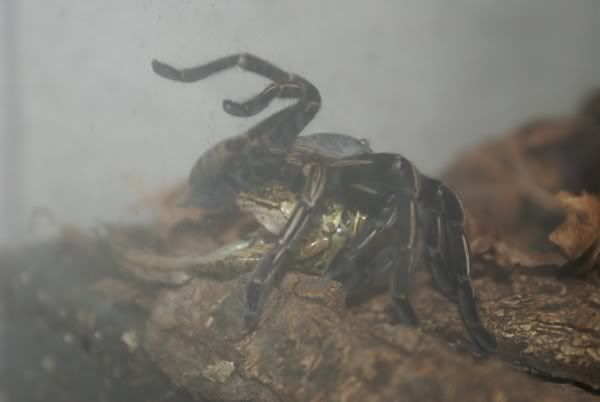- Joined
- Feb 28, 2007
- Messages
- 1,670
mine will come from petco and they have been at petco for at least 3 -4 months and all they eat there crickets gut loaded so they should be cool..i wouldn't feed my t's wc frogs for fear of parasites to.... sooo take some of the suggestions above and dont do it....but for cb raised frogs?? heck ya...much better then mice in my opinion!!!but these are hard to come by unless you know someone that raises them....
i do like the idea of offering different food items every once in awhile especially for my breeding females and have given them a wide assortment of wc prey items but with frogs and their ability to retain a good deal of toxins and parasites, its a gamble im not willing to take...now if i lived in an area where i know they wouldn't get expossed to such things:? maybe but i'd still be cautious....
i'd love to see more research on the topic though....and would love to hear more of the other hobbyists experiences on the topic

